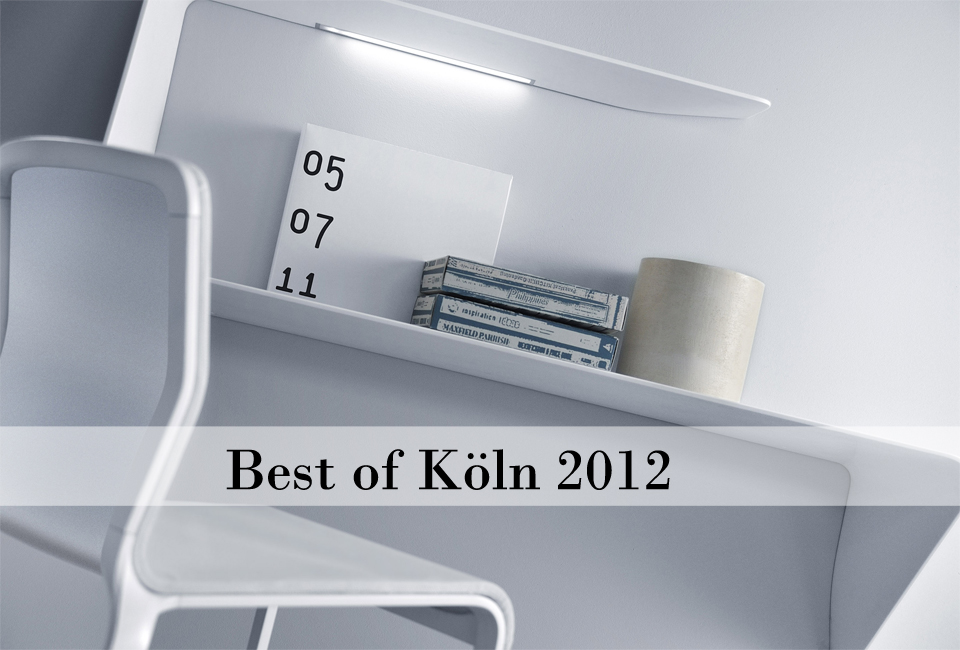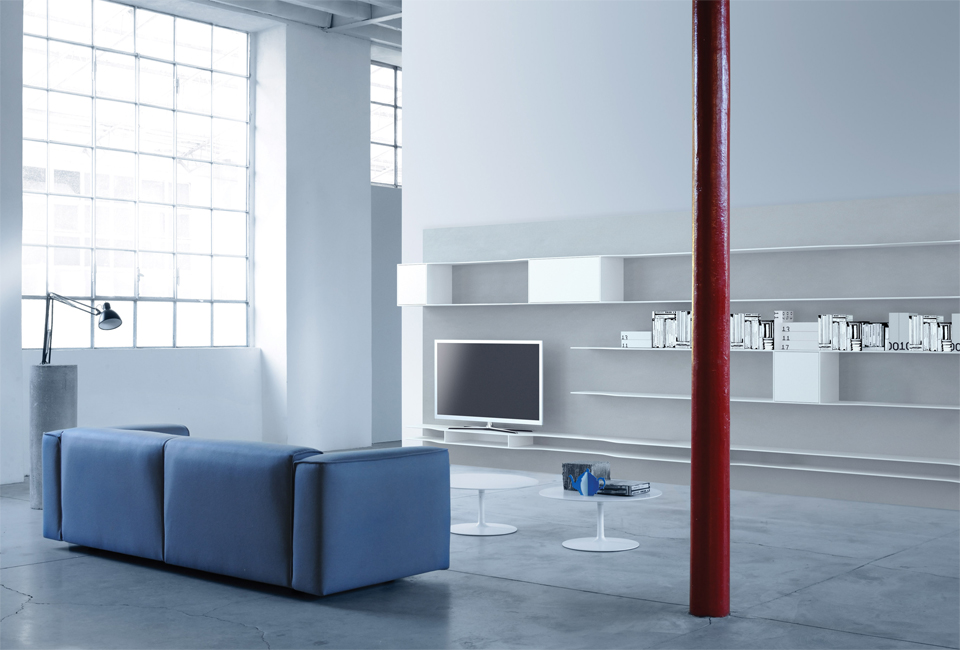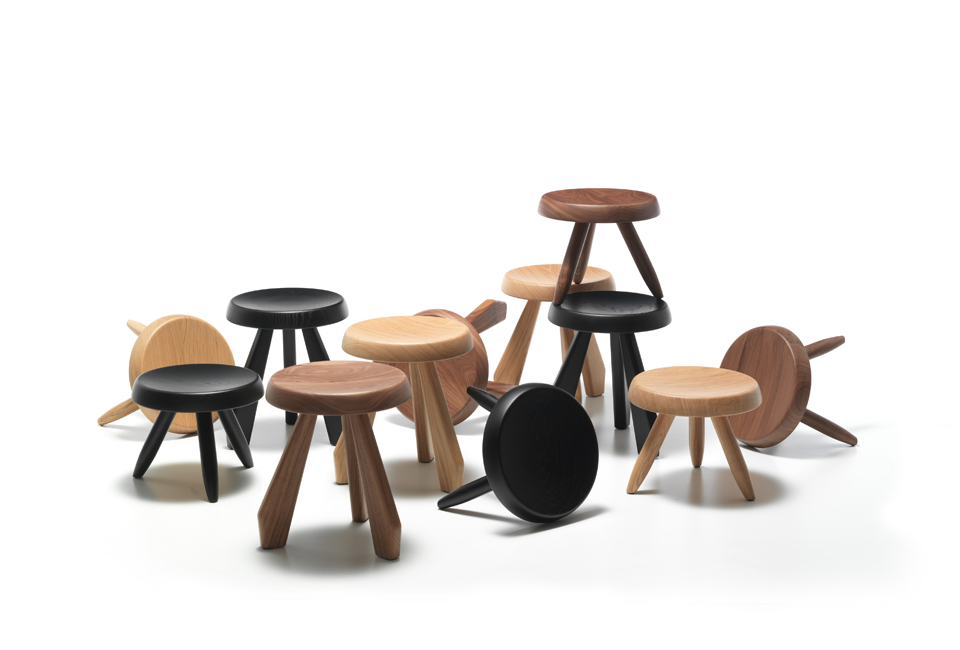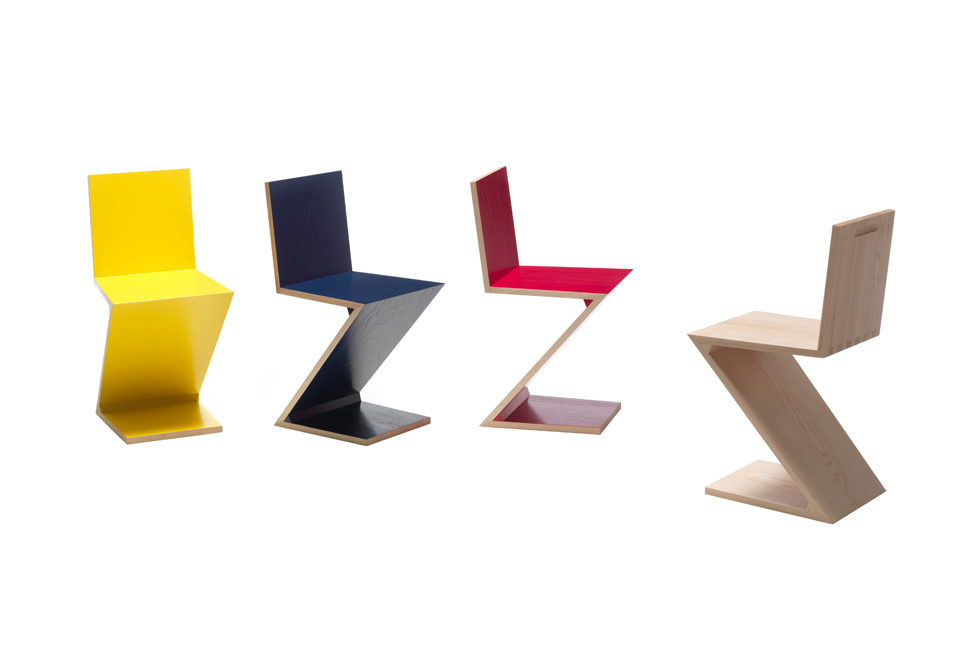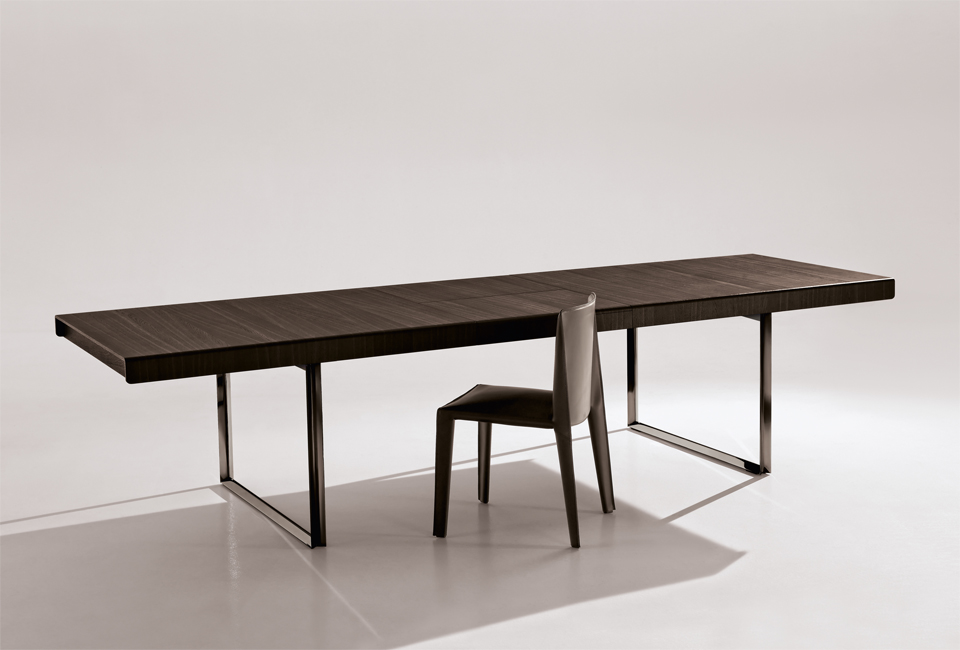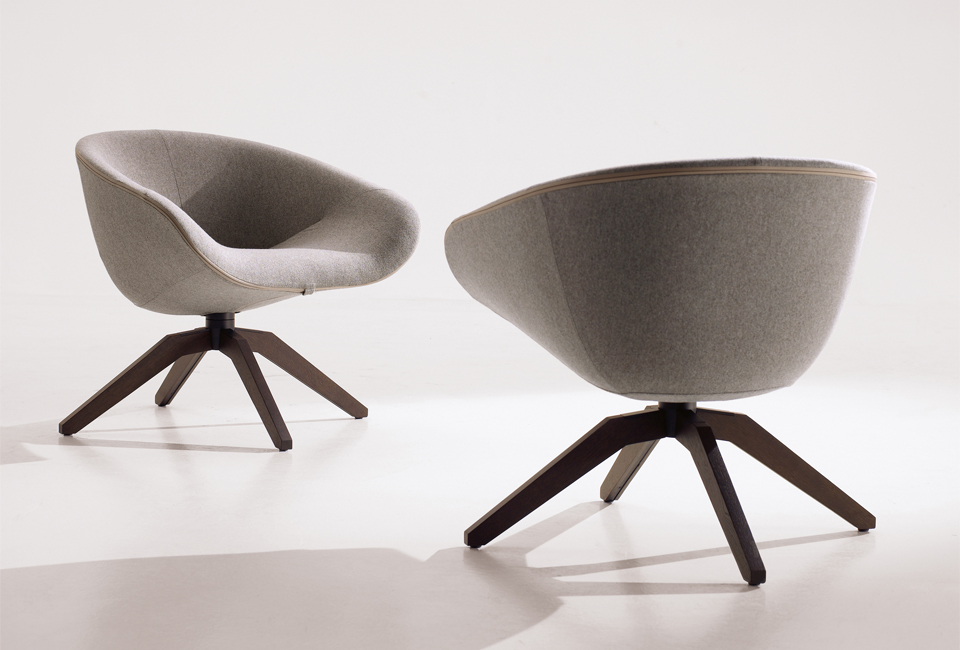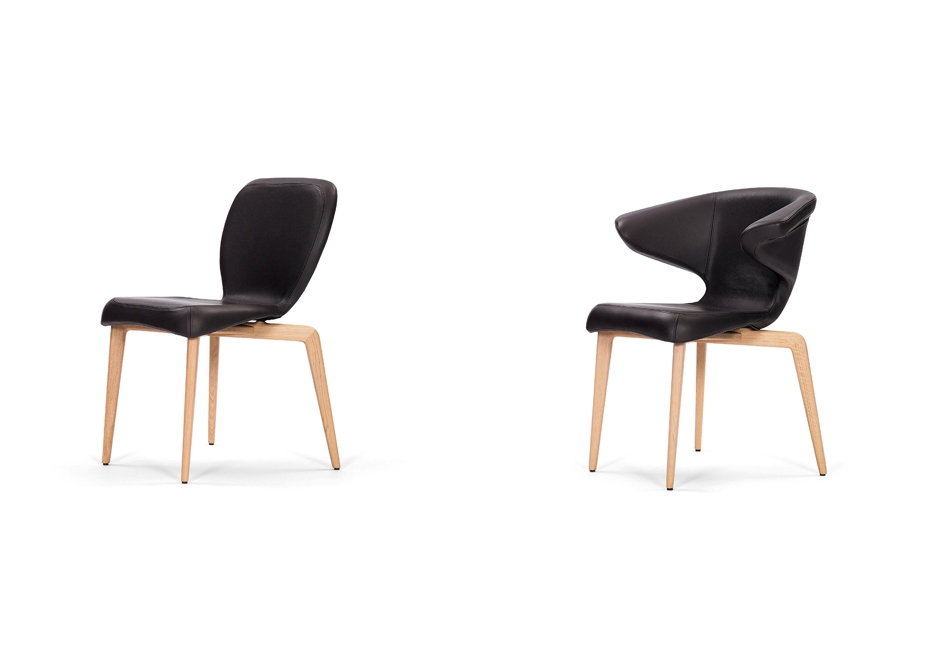We attended the Imm Köln 2012, and we were really impressed with the quality of this fair. The last years the Köln Fair is getting much more importance with a high number of visitors and many novelties presented by the most important design companies such as B&B Italia, Cassina, ClassiCon, MDF Italia etc.
We here at Delood, are very happy to present to our unique visitors at first glance our design selection concerning the most important novelties presented in the Fair. Below you will find the most interesting one’s that we came across:
MAMBA shelf/desk:
Designer: Victor Vasilev
Producer: MDF Italia
The Mamba project designed by young designer Victor Vasilev was the most interesting design we show in the Fair. The Mamba project majestically combines form, function and material to give rise to a piece with a sensual feel and look, a piece that seems to materialize from and disappear into the wall, a piece which springs from the designer’s considerations about the material, its intrinsic and extrinsic properties, and the way it is processed.
The result of the idea of a continuous strip which traces an organic figure on the wall is a new type of furnishing complement, a unique blend of shelf, desk and table with LED light source.
WAVE wall system:
Designer: Bruno Fattorini & Partners
Producer: MDF Italia
The Wave wall-mounted system is the result of the designer’s reflections on the recent history of the company and its design philosophy - a quest for simplicity, combined with an innovative appearance that is never disconnected from functionality. Wave comprises wall-mounted panels, storage units with shelves, and individual storage units which can be composed in a dynamic way to create free-standing or wall-mounted configurations offering great functionality and elegance.
Wave was created from the desire to obtain a linear design that is simultaneously dynamic. The change of depth and reduced shelf thickness provide versatility in use, and also create a visual effect that looks like waves moving through the sea.
"This gives the system an appearance of lightness, without compromising its performance.”
The shelves and storage units hook onto the panel in a simple yet effective way, and the panel can be set up to allow the passage of cables for a TV or other electronic equipment.
To correct possible irregularities in the structure of the wall, the panel is equipped with mechanical adjustment systems so that installation is both easy and flawless.
With the various elements that make up the system, configurations can be created employing open storage units, as well as closed solutions with doors, drawers or a deep drawer.
Zig Zag in color:
Designer: Gerrit T. Rietveld.
Producer: Cassina
The work of Gerrit T. Rietveld is defined by continual experimentation. The brilliant Dutch architect of neoplasticism designed and proposed numerous variations on his most famous models. Cassina, in search of the most hidden and authentic sides of each architect, has rediscovered several variations on the ‘Zig Zag’ chair, an icon already in production in the Cassina I Maestri Collection, to celebrate the fortieth anniversary of the acquisition of the exclusive worldwide reproduction rights to his designs.
Rietveld, designer, architect but also urbanist, loved raw surfaces and sometimes whitened wood with natural reagents such as sunlight or salt. The architect created several variations of the ‘Zig Zag’ chair, including some with varnished colors and white sections, which are displayed at the Centraal Museum in Utrecht. With this in mind, Cassina is now presenting the ‘Zig Zag’ chair in natural ash and in a colored version with an open pore finish that enhances the wood grain, applying pure colors (red, blue, yellow) and non-colors (white, black) on the surfaces and natural ash on the lateral sections.
An interpretation created with the consent of Rietveld’s heirs, which, precisely because they are not unquestioning and rigid, adheres completely to the architect’s design philosophy. According to neoplastic theory, color makes it possible to neutralize form. A process of de-materialization further highlights the rhythmic sequence of the reversed z shape, emphasizing the relationship between the vertical, oblique and horizontal lines. Cassina thus recovers the sensory element of the material and combines this with a flexible use of colour, typical of Rietveld who emphasized the intersection between infinite graphic lines in his designs.
A dissection into geometric planes and surfaces is evident in the new version of the ‘Utrecht’ sofa as well. In keeping with Rietveld’s spirit of freedom, change and innovation Cassina introduces, in addition to the curved sofa already in the collection, and in agreement with his heirs, a two and three-seater sofa characterized by a straight backrest that can be rested against a wall. An interpretation that highlights the graphic rhythm and separation of structural elements that are recurrent themes in Rietveld’s work.
Tabouret Berger:
Designer: Charlotte Perriand
Producer: Cassina
This tabouret was inspired, as its name suggests, by a stool for shepherds. It was presented for the first time in Tokyo during the Synthèse des arts exhibition in 1955. It is created entirely out of wood in three finishes –Canaletto walnut, natural oak and black-stained oak. It distinguishes itself by its elegant turned legs.
Athos:
Designer: Paolo Piva
Producer: B&B Italia
Ten years since it was unveiled and quickly become a best seller in the table category, Athos has been completely redesigned including its supporting structure and top design. The frames have a metal “V shaped” profile with glossy chrome-plated, black chrome-plated or bronzed nickel finishes. The thick top is softened by rounded edges and created in wood (natural oak, brushed black oak, grey oak and smoky oak) or in satin painted finish. Created in a single width (100 cm), Athos is available in a fixed version in two sizes (200cm and 250 cm) and an extendable version that uses an invisible mechanism to lengthen the top from 255cm to 320cm.
Mart:
Designer: Antonio Citterio
Producer: B&B Italia
Mart armchairs, introduced in 2003 with innovative technology for thermoforming leather, are now proposed, both for the fabric as well as for the leather version, with a new swivel base with four spokes in smoked stained oak.
Munich Chair:
Designer: Sauerbruch Hutton
Producer: ClassiCon
Modern art of the 20th and 21st centuries deserves an appropriate setting, with a building and its furniture that is just as modern. Berlin architects Sauerbruch Hutton were thus faced with an exciting challenge when asked to design the Museum Brandhorst in Munich.
Three different seating solutions were developed for the museum, which opened in 2009 – for the cafeteria, the foyer, the conference and lecture rooms as well as the lounge. ClassiCon developed the designs to the point of series production in close collaboration with the architects. Along with demanding expectations in terms of form and quality, the typical wear and tear that the furniture would be subjected to in the public space had also to be taken into consideration. Its durability was ensured by means of various tests.
